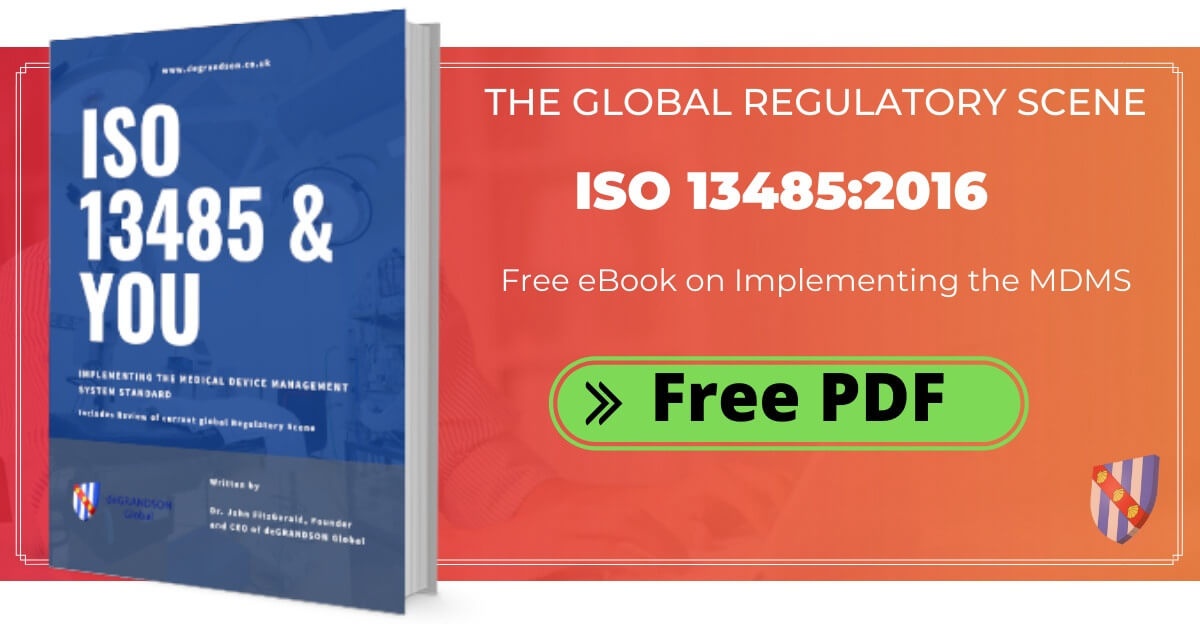The medical device industry operates within a highly regulated landscape where product quality, safety, and reliability are critical. In this complicated world, ISO 13485 is an essential guide in helping medical device manufacturers and suppliers achieve excellence in quality management.
Today, let's look at how ISO 13485 compliance can affect the medical device supply chain from the starting point to the finish line.
ISO 13485 and the Medical Device Supply Chain
As an international standard that sets out the requirements for a quality management system specific to the medical devices industry, ISO 13485 helps ensure the consistent design, development, production, installation, and delivery of medical devices.
By being compliant with ISO 13485, your organization can demonstrate your commitment to quality management practices, regulatory compliance, and your medical devices' overall safety and effectiveness.
The medical device supply chain is a complex network of related players working together to ensure the availability, quality, and safety of medical devices.
Key parts of the medical device supply chain include:
- Raw Material Suppliers - Raw material suppliers provide the essential components and materials used in the manufacturing of medical devices.
- Component Manufacturers - Component manufacturers produce individual parts or components assembled to create the final medical device. These can include electronic parts, plastics, metals, and other materials.
- Medical Device Manufacturers - The core of the supply chain, medical device manufacturers design, develop, and produce the final medical devices. They are responsible for ensuring compliance with regulatory standards, quality control, and meeting the intended purpose of the devices.
- Contract Manufacturers - Some medical device manufacturers outsource certain production parts to contract manufacturers specializing in specific manufacturing processes or technologies.
- Packaging and Labeling Suppliers - Suppliers of packaging materials and labeling play a crucial role in maintaining the integrity of medical devices during transportation, storage, and use.
- Logistics and Distribution - Logistics companies transport, store, and distribute medical devices. They ensure products arrive safely and on time while following specific storage conditions and regulations.
- Regulatory Authorities - Government agencies and regulatory bodies are responsible for establishing and enforcing regulations governing medical device manufacturing, distribution, and use. Examples include the FDA in the United States and the European Medicines Agency (EMA) in the European Union.
- Regulatory Affairs and Compliance Consultants - Professionals in regulatory affairs help navigate the complex landscape of medical device regulations. They ensure all necessary approvals and certifications are obtained for market access and compliance with local and international standards.
- Quality Management System (QMS) Providers - Companies that provide QMS solutions assist in establishing and maintaining the quality management systems required for compliance with standards such as ISO 13485.
- Healthcare Providers and End-Users - Hospitals, clinics, and other healthcare providers are the end-users of medical devices. Their feedback is crucial for improving products and ensuring that they meet the requirements of its target users.
- Post-Market Surveillance and Reporting - These are the people or organizations involved in monitoring the performance and safety of medical devices after they were introduced to the market, including reporting and investigating adverse events. They can include manufacturers, distributors, and healthcare providers.
- Recycling and Disposal Services - Proper disposal of medical devices at the end of their lifecycle is an important concern. Companies specializing in recycling and disposal help manage the environmental impact of medical devices.
Medical Device Manufacturing and Supplying Issues that ISO 13485 Can Address
Having a medical device management system that conforms with the requirements of ISO 13485 can help address various challenges faced by organizations operating in the medical device industry. These include:
1. Meeting strict and complex regulatory requirements within the medical device industry can be tricky, with non-compliance carrying the potential for legal repercussions and problems entering markets.
With ISO 13485's systematic approach to compliance aligned with regulatory expectations, your organization can actively minimize risks and make your interactions with regulatory authorities as smooth and efficient as possible.
2. Because there is a need to ensure the consistent quality and safety of medical devices, ISO 13485's strong emphasis on quality management throughout the product lifecycle can significantly help organizations establish effective processes for upholding the highest standards in product quality and safety.
3. Managing a complex and global supply chain where hurdles related to traceability, component quality, and collaboration are a common concern can be a challenge.
For this, ISO 13485 offers a solution by providing a comprehensive framework for effective supply chain management, including requirements for traceability and control of components.
4. Inherent risks within the medical device industry, from product design and manufacturing to post-market activities, pose another challenge.
ISO 13485 can address these by requiring organizations to implement a meticulous risk management process. This involves identifying, assessing, and mitigating risks throughout the product lifecycle, significantly enhancing product safety and performance.
5. Extensive documentation requirements in the medical device industry, necessary for demonstrating compliance and maintaining a comprehensive record of activities, can also be another issue.
Thankfully, ISO 13485 provides a concrete solution requiring documentation and record-keeping processes. This ensures that organizations maintain transparent, accurate, and comprehensive documentation, contributing to transparency and auditability.
And because the implementation of the standard requires organizations to systematically monitor and measure processes, collect data for analysis, and implement corrective and preventive actions, ISO 13485 can be a big help to organizations trying to adapt to changes, enhance efficiency, and address emerging challenges by fostering a culture of continuous improvement.
6. Finally, as a recognized international standard, ISO 13485 can help overcome the challenge of entering markets with diverse regulatory and quality standards by demonstrating compliance with widely accepted quality management principles.
Where do I start if I want to get Certified to ISO 13485?
This question is frequently asked by those involved in the medical device supply chain (e.g., component manufacturers and logistics companies) with no experience with medical device manufacturing.
With a steady, if slow, increase in medical device companies requiring ISO 13485 certification of their suppliers, this question is being asked more and more often.
You may go to Consultants or Certification Bodies and Notified Bodies for the answer. However, the ISO Technical Committee for Medical Devices (ISO/TC 210) is a fast source of dependable, unbiased information.
Two essential ISO 13485 Guidance Documents
Two documents they have published on this topic are …
- ISO 13485 - Quality management for medical devices: A free brochure with tips for getting started with ISO 13485.
- ISO 13485:2016 - Medical devices - A practical guide: Published in 2017, this 200+ page guide is a solid source of information on the implementation and maintenance of a Medical Device Management System (MDMS) and a solid basis on which to defend your interpretation of the Standard with Certification Bodies, Notified Bodies and Regulatory Bodies.
It will benefit all organizations active in the medical device sector, including manufacturers, importers, distributors, service providers, certification bodies or regulatory bodies.
You can purchase a copy on the ISO website.
Here is part of the introductory text that spells out the purpose of this publication:
This handbook has been written by a task group of technical experts from ISO’s Technical Committee TC 210. A draft was circulated to all the member national standards bodies and liaison organizations of ISO/TC 210 to obtain feedback and comments; these have been considered by the task group prior to the release of the final text.
The requirements of ISO 13485 are general in nature and, with the exception of a few sub-clauses that are applicable to specific medical device types, are intended to be applicable to all medical device organizations, regardless of their type, size, or the product they provide.
This handbook is intended to guide organizations that provide products, including services, that affect any part of the life cycle or supply chain of a medical device. Such organizations can be manufacturers, importers, distributors, service providers or authorized representatives. In addition, this handbook can be useful to regulatory authorities and certification bodies concerned with conformity to ISO 13485. (our emboldening)
So now you know where to start
Having familiarised yourself with the basics of applying ISO 13485 to your organization, you will then be ready to talk with Consultants, Certification Bodies (for Class 1 or Class A Devices) and/or Notified Bodies (for all other classes of device).
If you’d like to implement and maintain a Medical Device Management System yourself, consider our online ISO 13485 Lead Implementer Course. This is one of the eight ISO 13485 Courses we offer.
First published on August 2019; revised and updated on November 24, 2022.
Related Courses
Related Articles
- ISO 13485 for Suppliers to the Medical Device Sector
- ISO 13485 Certification Process: How and What to Prepare
deGRANDSON Global is an ISO Certified Educational Organization
In October 2021 we secured certification to three education-related ISO Standards. We now have a university-grade management system in place conforming to the requirements of …
We have chosen ISO 21001 certification because, unlike IRCA and Exemplar badges (which in our opinion are commercially compromised), it is based on independent third-party assessment. It is a ‘university grade’ standard in use globally by schools, colleges, and universities to demonstrate their competence.


